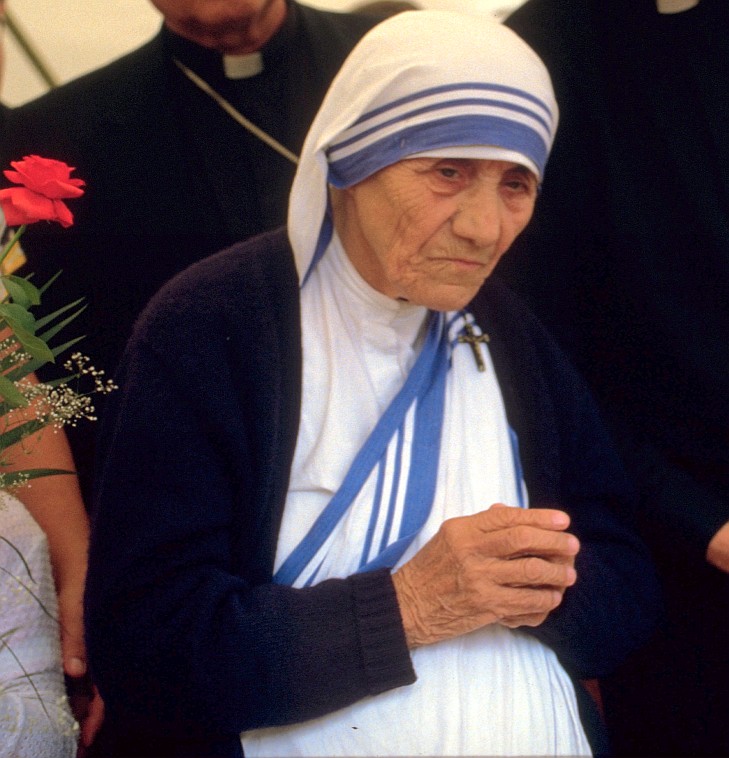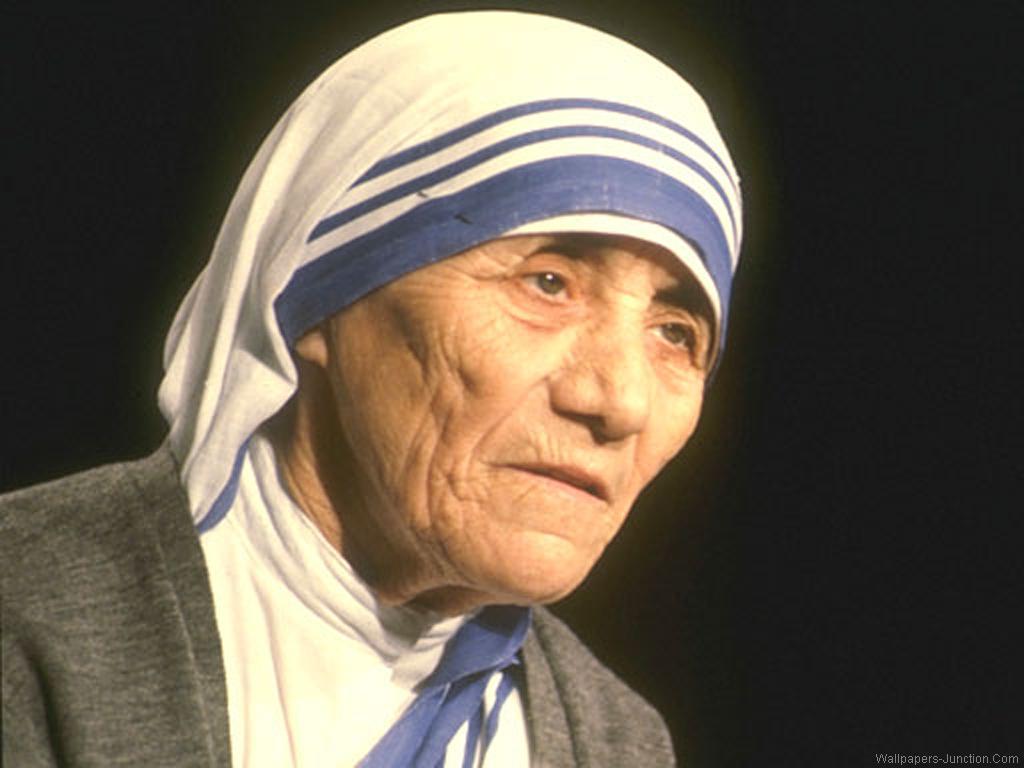"It is not how much we do, but how much love we put in the doing. It is not how much we give, but how much love we put in the giving."
- Mother Teresa
Short Biography Mother Teresa
mother teresaMother Teresa was born, 1910, in Skopje, capital of the Republic of Macedonia. Little is known about her early life, but at a young age she felt a calling to be a nun and serve through helping the poor. At the age of 18 she was given permission to join a group of nuns in Ireland. After a few months of training, with the Sisters of Loreto, she was then given permission to travel to India. She took her formal religious vows in 1931, and chose to be named after St Therese of Lisieux - the patron saint of missionaries.
On her arrival in India, she began by working as a teacher, however the widespread poverty of Calcutta made a deep impression on her; and this led to her starting a new order called “The Missionaries of Charity”. The primary objective of this mission was to look after people, who nobody else was prepared to look after. Mother Teresa felt that serving others was a key principle of the teachings of Jesus Christ. She often mentioned the saying of Jesus,
"Whatever you do to the least of my brethren, you do it to me."
As Mother Teresa said herself:
"Love cannot remain by itself -- it has no meaning. Love has to be put into action, and that action is service ." - Mother Teresa
mother-teresaShe experienced two particularly traumatic periods in Calcutta. The first was the Bengal famine of 1943 and the second was the Hindu/Muslim violence in 1946 - before the partition of India. In 1948, she left the convent to live full time amongst the poorest of Calcutta. She chose to wear a white Indian Sari, with blue trimmings - out of respect for the traditional Indian dress. For many years, Mother Teresa and a small band of fellow nuns survived on minimal income and food, often having to beg for funds. But, slowly her efforts with the poorest were noted and appreciated by the local community and Indian politicians.
In 1952, she opened her first home for the dying, which allowed people to die with dignity. Mother Teresa often spent time with those who were dying. Some have criticised the lack of proper medical attention, and refusal to give painkillers. But, others say that it afforded many neglected people the opportunity to die knowing someone cared.
Over time the work grew. Missions were started overseas, and by 2013, there are 700 missions operating in over 130 countries. The scope of their work also expanded to include orphanages, and hospices for those with terminal illness.
“Not all of us can do great things. But we can do small things with great love.”
— Mother Teresa
Mother Teresa never sought to convert those of an another faith. Those in her dying homes were given the religious rites appropriate to their faith. However, she had a very firm Catholic faith and took a strict line on abortion, the death penalty and divorce - even if her position was unpopular. Her whole life was influenced by her faith and religion, even though at times she confessed she didn't feel the presence of God.
The Missionaries of Charity now has branches throughout the world including branches in the developed world where they work with the homeless and people affected with AIDS. In 1965, the Society became an International Religious Family by a decree of Pope Paul VI.
In the 1960s, the life of Mother Teresa was first brought to a wider public attention by Malcolm Muggeridge who wrote a book and produced a documentary called “Something Beautiful for God”.
mandela-teresaIn 1979, she was awarded the Nobel Peace Prize "for work undertaken in the struggle to overcome poverty and distress, which also constitutes a threat to peace." She didn't attend the ceremonial banquet, but asked that the $192,000 fund be given to the poor.
In later years, she was more active in western developed countries. She commented that though the west was materially prosperous, there was often a spiritual poverty.
“The hunger for love is much more difficult to remove than the hunger for bread.” — Mother Teresa
When she was asked how to promote world peace, she replied.
"Go home and love your family"
Over the last two decades of her life, Mother Teresa suffered various health problems but nothing could dissuade her from fulfilling her mission of serving the poor and needy. Until her very last illness she was active in travelling around the world to the different branches of "The Missionaries of Charity" During her last few years, she met Princess Diana in the Bronx, New York. The two died within a week of each other.
Following Mother Teresa’s death the Vatican began the process of beatification, which is the second step on the way to canonisation and sainthood. Mother Teresa was formally beatified in October 2003 by Pope John Paul II and is now known as Blessed Teresa of Calcutta.
Mother Teresa was a living saint who offered a great example and inspiration to the world.
 |
| Mother teresa |
 |
| Mother teresa |
 |
| Mother teresa |
 |
| Mother teresa |
 |
| Mother teresa |
 |
| Mother teresa |
 |
| Mother teresa |
 |
| Mother teresa |
 |
| Mother teresa |
 |
| Mother teresa |
 |
| Mother teresa |
No comments:
Post a Comment